Lucas Round Axillary lights
This page covers Lucas round axillary lights optionally used on many 1950s and 1960s British cars. It does not include versions made specifically for Rolls Royce.
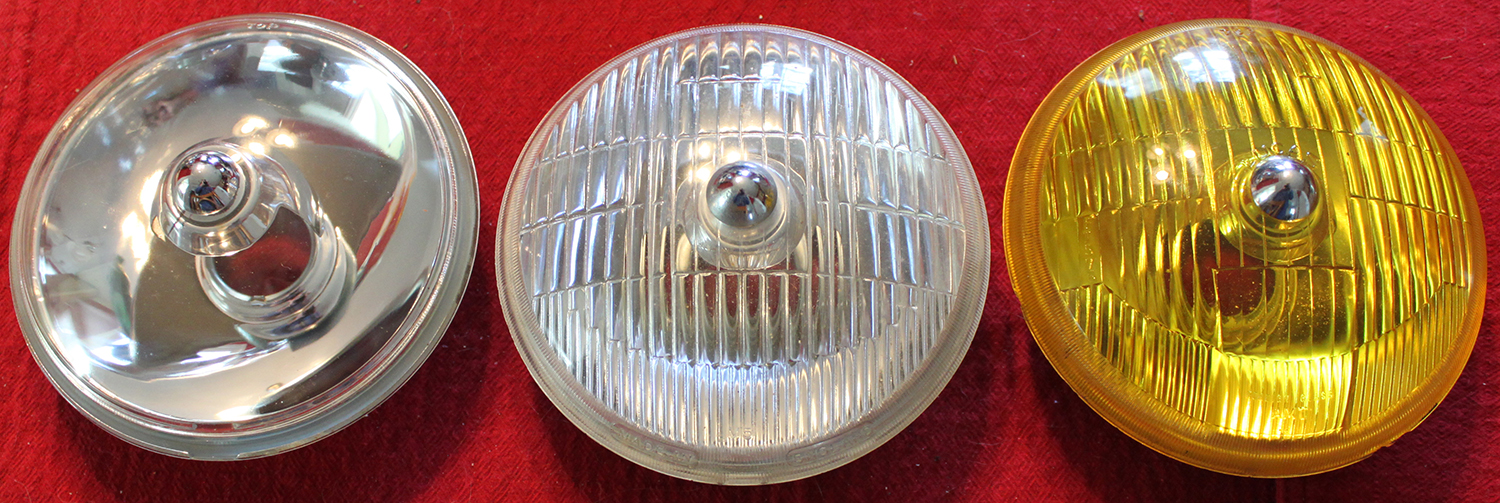
Light types:
Early Lucas round auxiliary lights were 7 inches in diameter. Around 1953 production of the 5-3/4 inch diameter auxiliary lamps began. The early lamps can be identifed by a smooth top to the upper lens clamp (name plate). Sometime around 1962 the lamps gained a ribbed top clamp. Production ended sometime in the 1980s and very good quality reproduction lamps replaced them During the 1990s. Concerned about trademark lawsuits, Moss Motors reproductions were labeled "Moss" where the Lucas name goes at the top front of the lamp. They later started offering reproduction lamps labeled Lucas. The reproductions are quite good and can only be identified by the lack of secondary label markings.
SFT = clear fog lamp, bottom mount
FT = yellow fog lamp, bottom mount (French specification)
SLR = long range driving lamp (AKA Flamethrower), bottom mount
WFT = fog lamps, rear mount
WLR = Long range driving lamp, rear mount
576 = 5-3/4" diameter
700 = 7" diameter
Complete lamp part numbers:
SFT576 = 5-3/4" diameter fog lamp = Lucas 551128
SLR576 = 5-3/4" long range driving lamp = Lucas 55132E (55257A for France)
FT576 = 5-3/4" yellow fog lamp = 552333A/B for sale in France and optional in other countries
|
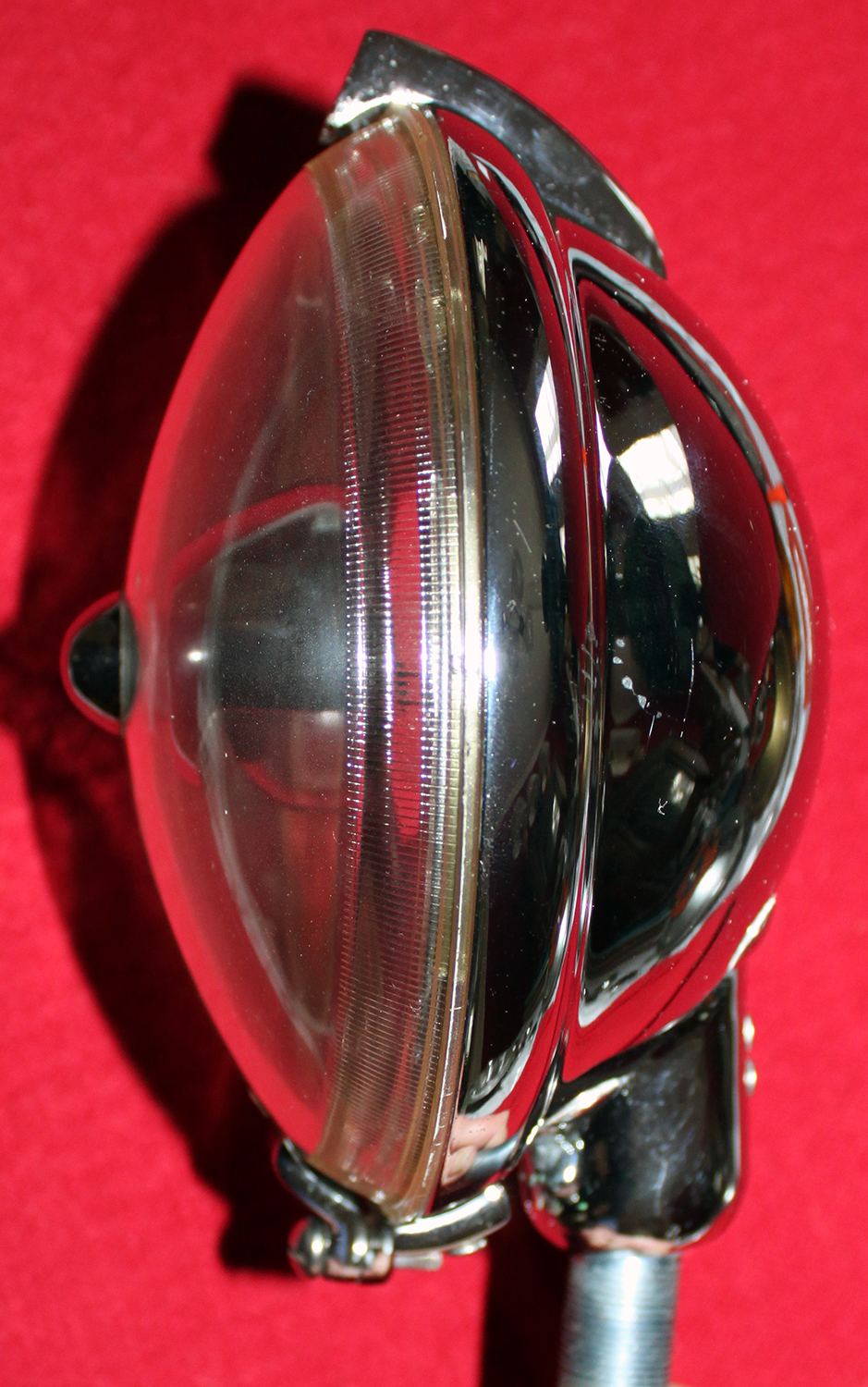
SLR576 "Flamethrower"
|
Lamp Housing:
There is one style of housing used for the 5-3/4" type 576 housing, both genuine and aftermarket. The only real changes were the existence of a top rib on the top lens clamp and stamped labeling.
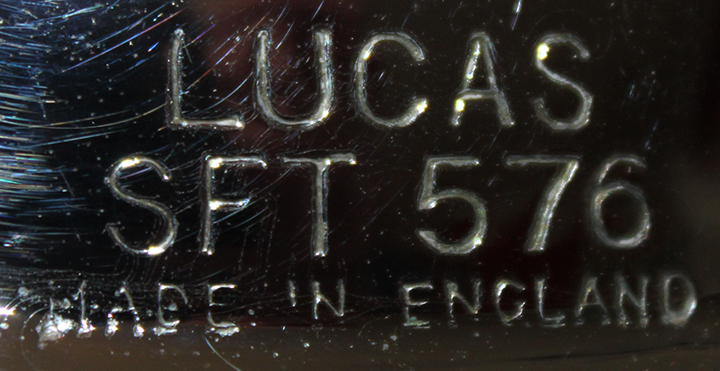
Genuine Lucas lamp housings are stamped near the bottom. Aftermarket housings are not stamped.
Lamps made specifically for Jaguars have a longer bottom mounting stud and different nut. The removable bottom clamp locks the lens into place and is attached by a single chromed screw (Lucas 144921). There is a black 1/16" thick rubber pad 7/16" X 5/16" glued to the top and bottom clamps that protect the lens from cracking when mounted.
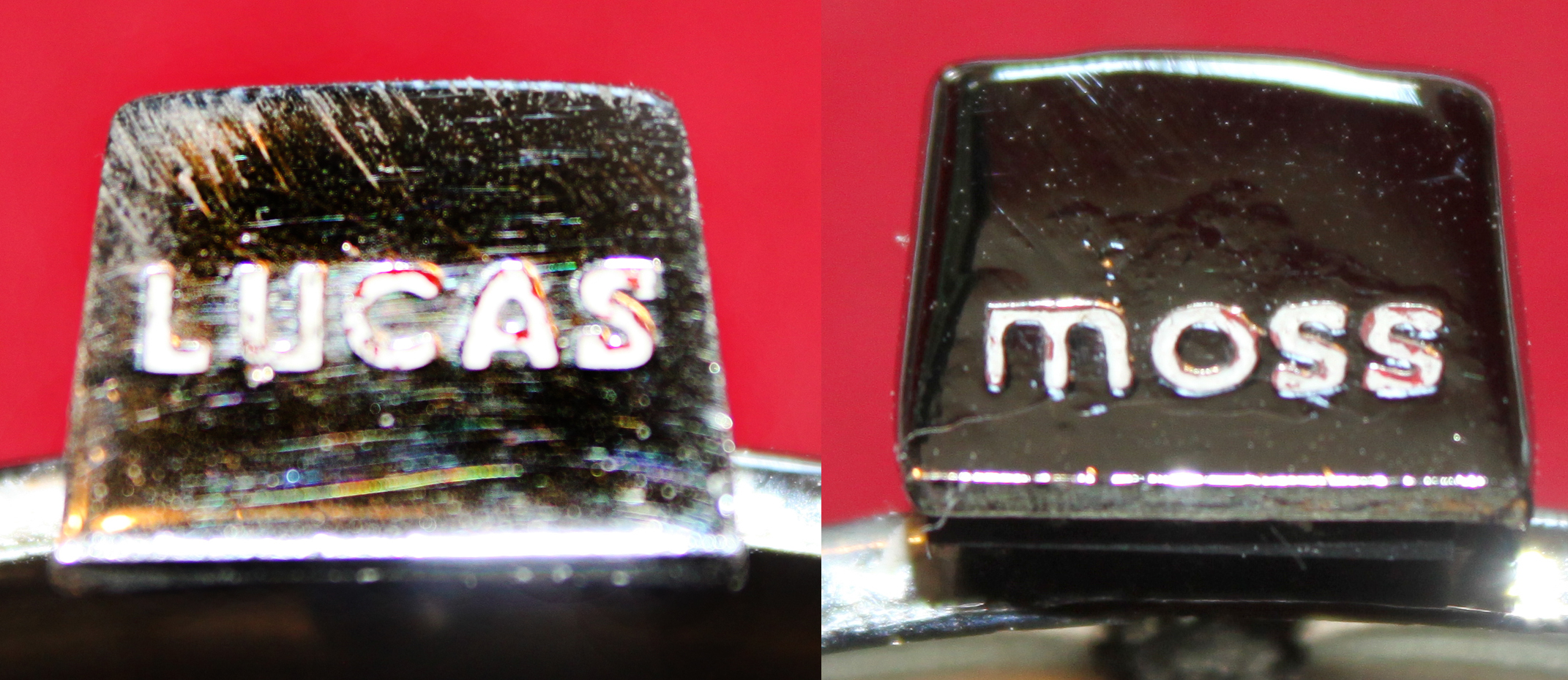
Both genuine and aftermarket top lens clamps are stamped "LUCAS" except for reproductions sold by Moss during the 1990s. Moss was concerned about being sued for trademark infringement. They later sold aftermarket lamps marked LUCAS. Note that the labels are red. The white is old polish.
It is not uncommon for the threaded bottom mounting stud and its nut to become rusted requiring them to be cleaned up with a tap and die. The thread is British Standard Bicycle (BSC) 5/8"- 26 tpi, 60 degree pitch. If you have a lamp with the longer mounting stud and prefer to shorten the mounting stud for a more aesthetic fit, a BSC 5/8" die is a must have to clean up the threads after cutting. They are available for sale through the internet. |
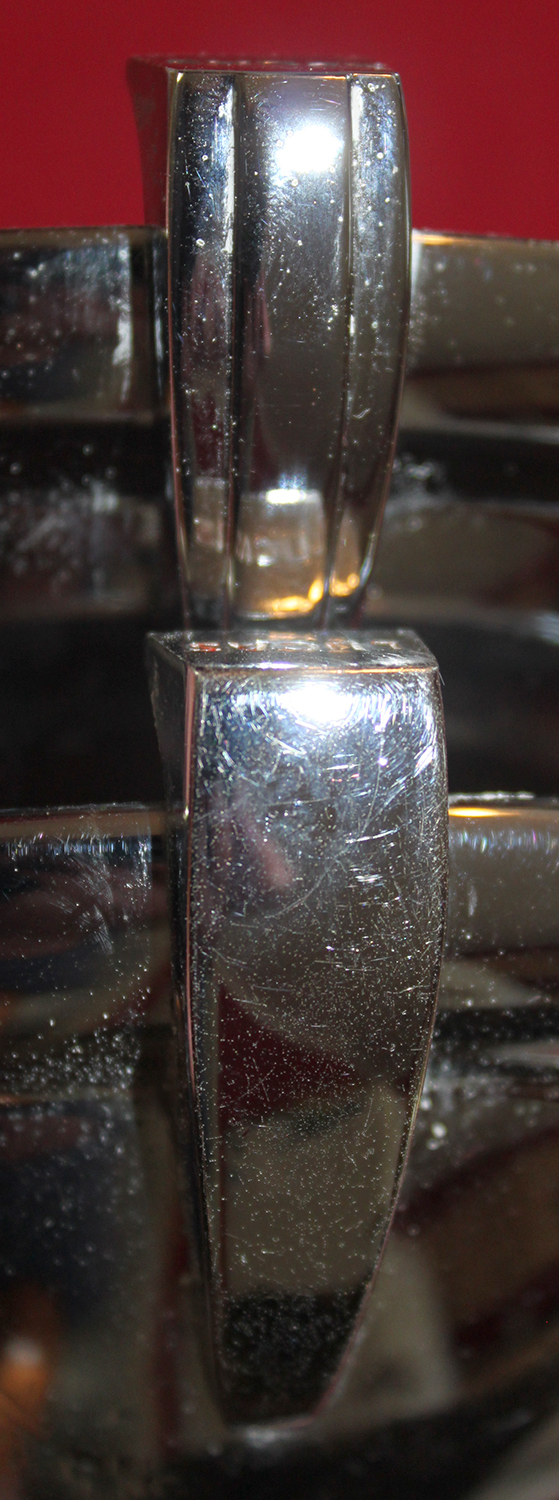
Top lens clamps:
BOTTOM: The early genuine LUCAS top lens clamp had a smooth top.
TOP: The later genuine and aftermarket lens top clamps have a raised ridge along the top, starting around 1963. |
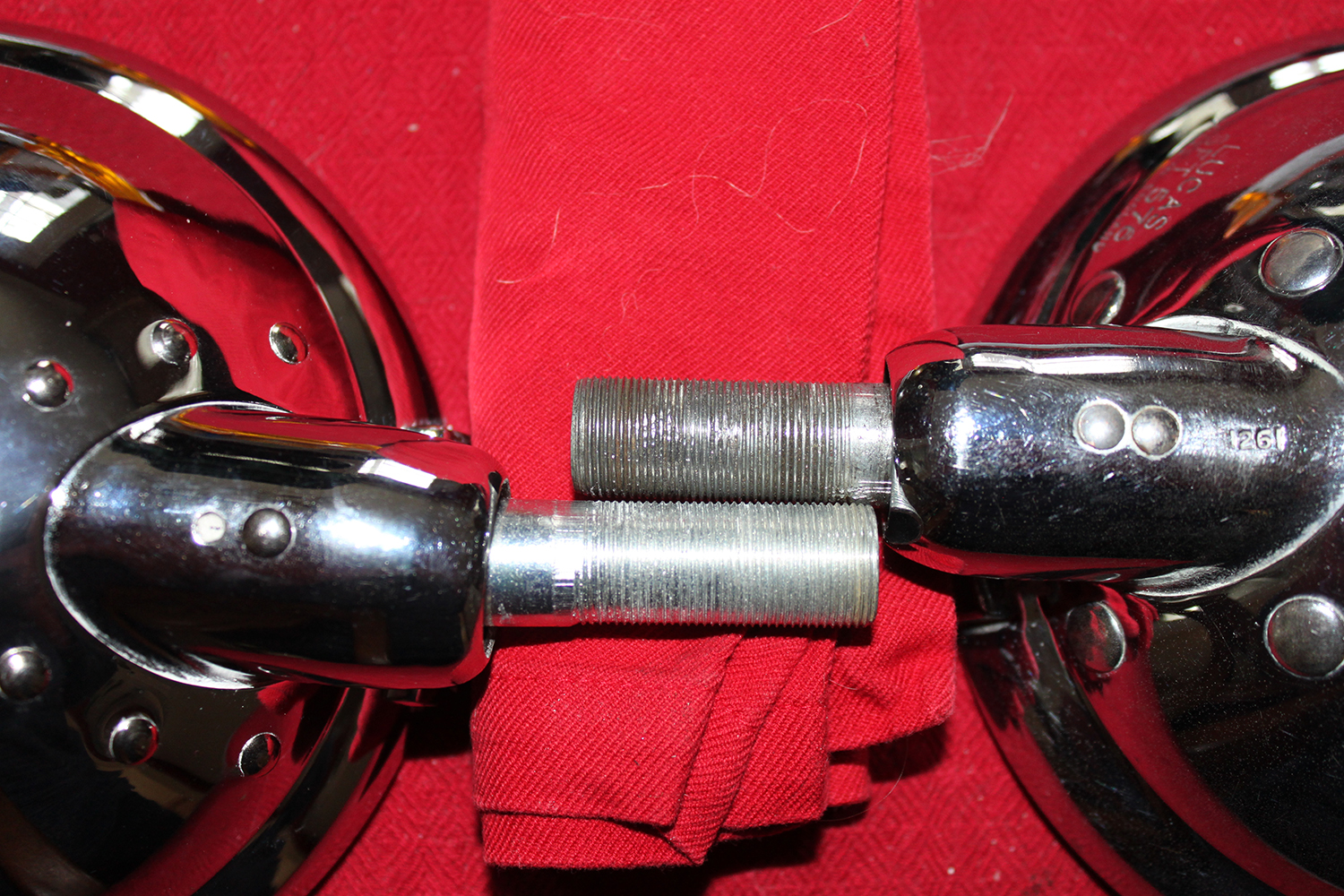
There are two lengths of mounting studs. Genuine Lucas for non-Jaguars is 1-3/8" long below the housing.
Genuine Lucas for Jaguar and aftermarket 576 lamps both have a 1-15/16" or 2" long mounting stud below the housing,
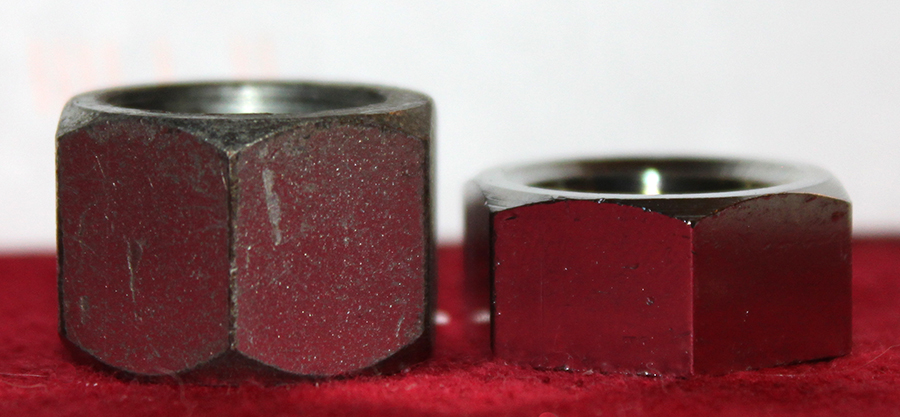
I found 2 different length nuts for the mounting studs. The tall one, 5/8" tall, plated steel, chamfered at both ends, came off an original lamp with the longer mounting threads and is presumed to the Jaguar specific lamp nut. The shorter one, 3/8" tall, plated brass, chamfered on one end, came on both the original Lucas lamps with the shorter mounting stud and the aftermarket lamps with the longer mounting stud.
Both have 5/8" BSC threads.
Lens:
There were 2 types of lens, a fog light lens and a clear long range lens. The fog light lens came in either clear or yellow. The yellow was specifically for the French market and was optional for other countries. There is a silvered front reflector mounted inside the lens and screwed to a external bullet shaped metal piece on the outside centre of the lens. The purpose of this front reflector is to reflect the light from the special bulb back into the rear lens reflector to provide more focused light out the front. Again, the reproduction lenses are very good quality and the only way to identify the genuine Lucas lens is by looking at the markings on the front of the lens. If you intend to mount both a fog and a driving lamp, the driving lamp is usually mounted on the driver side.
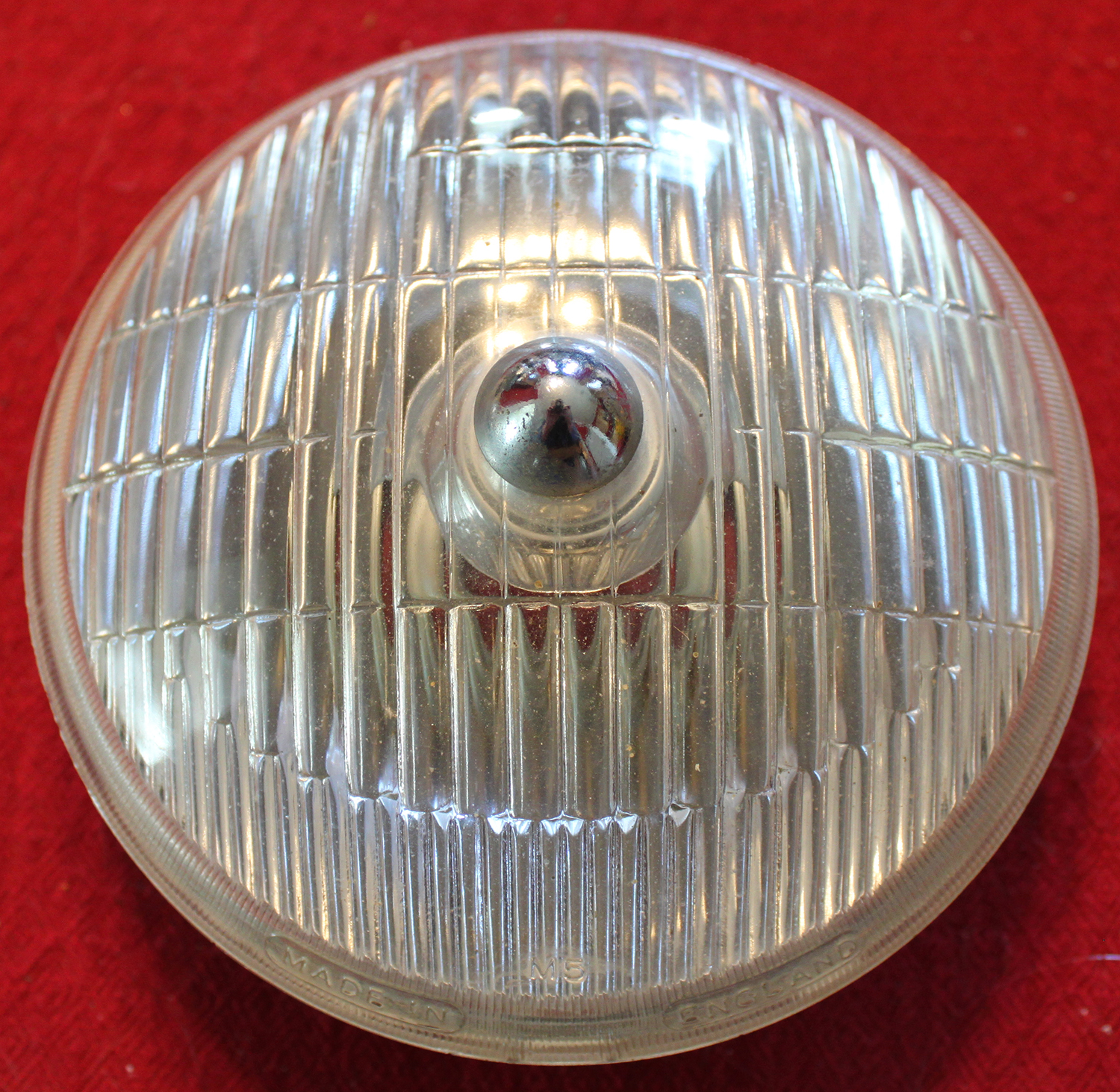
The genuine Lucas clear fog lens is marked "Made in England" at the bottom front and "M5" just above
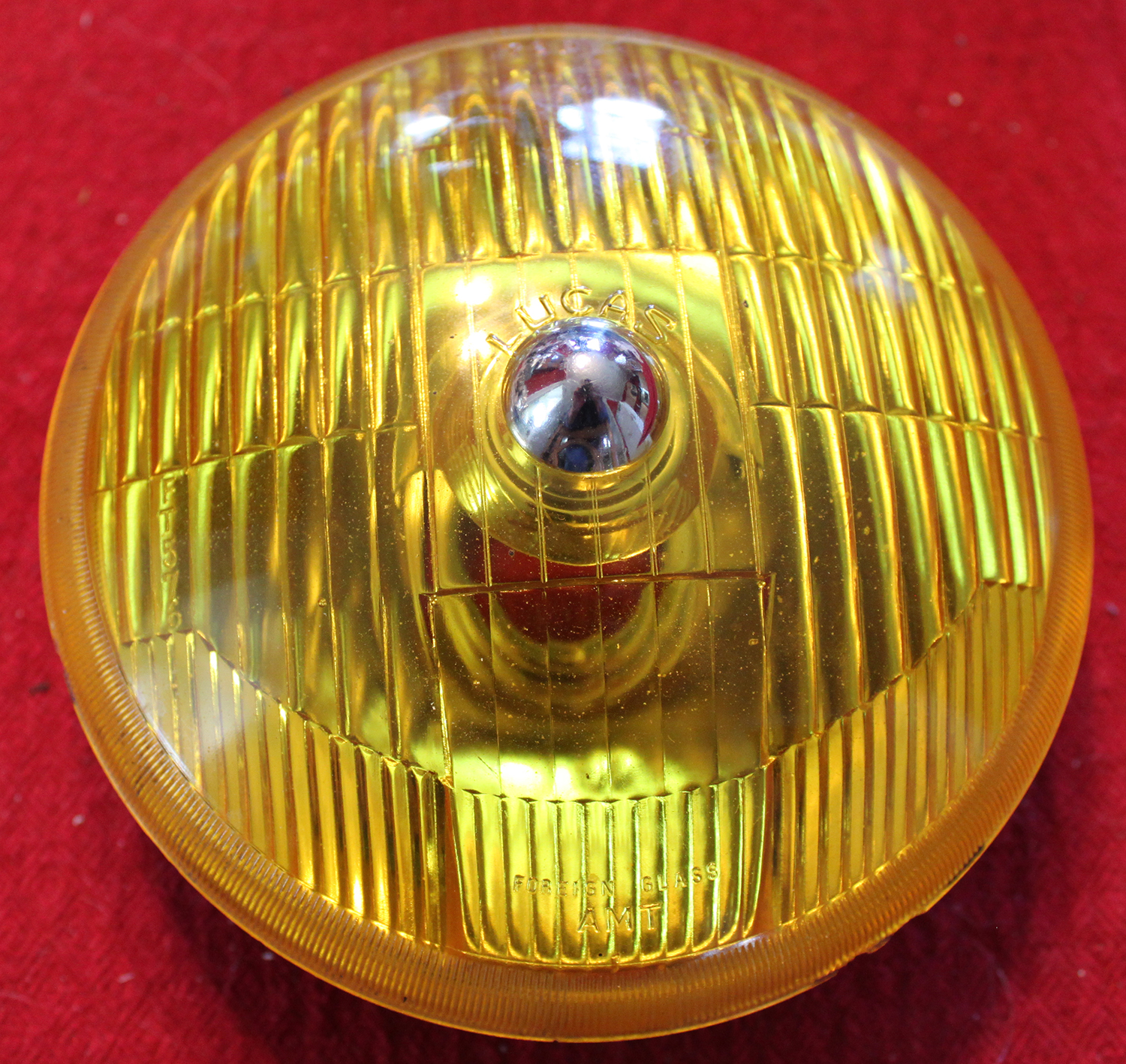
The genuine yellow fog lens is marked "LUCAS" just above the metal bullet at the centre of the lens, "FT576" vertically near the middle left (looking at the lens), and "Foreign glass AMT" at the bottom font
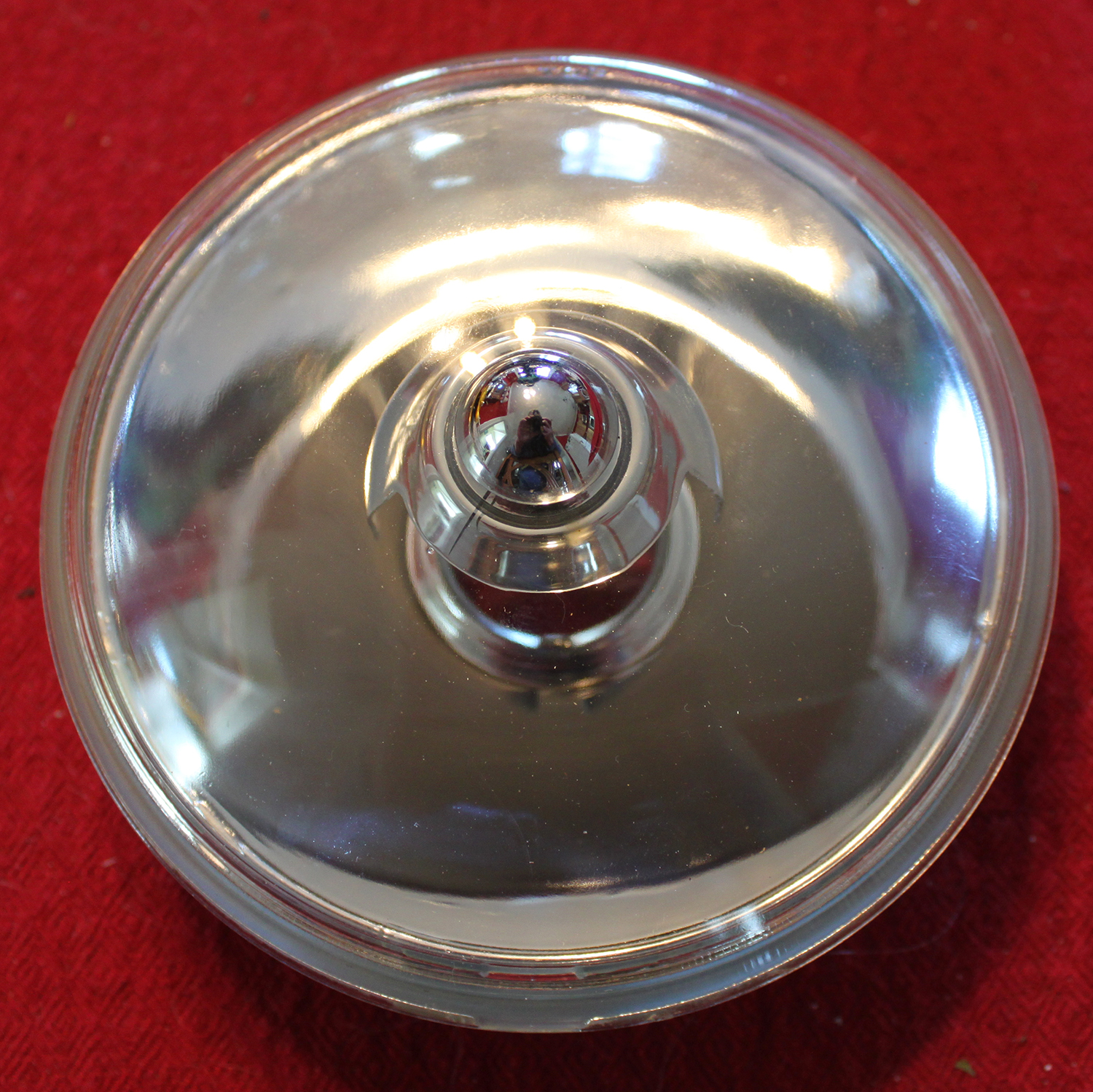
The genuine clear long range driving light lens is marked "England" at the bottom, and "M5" a little above it. Aftermarket lens is Just labeled "TOP" near the top of the lens.
Lens part numbers:
Clear fog = Lucas 554813
Yellow fog = Lucas 554820
Driving lamp = Lucas 554816 |
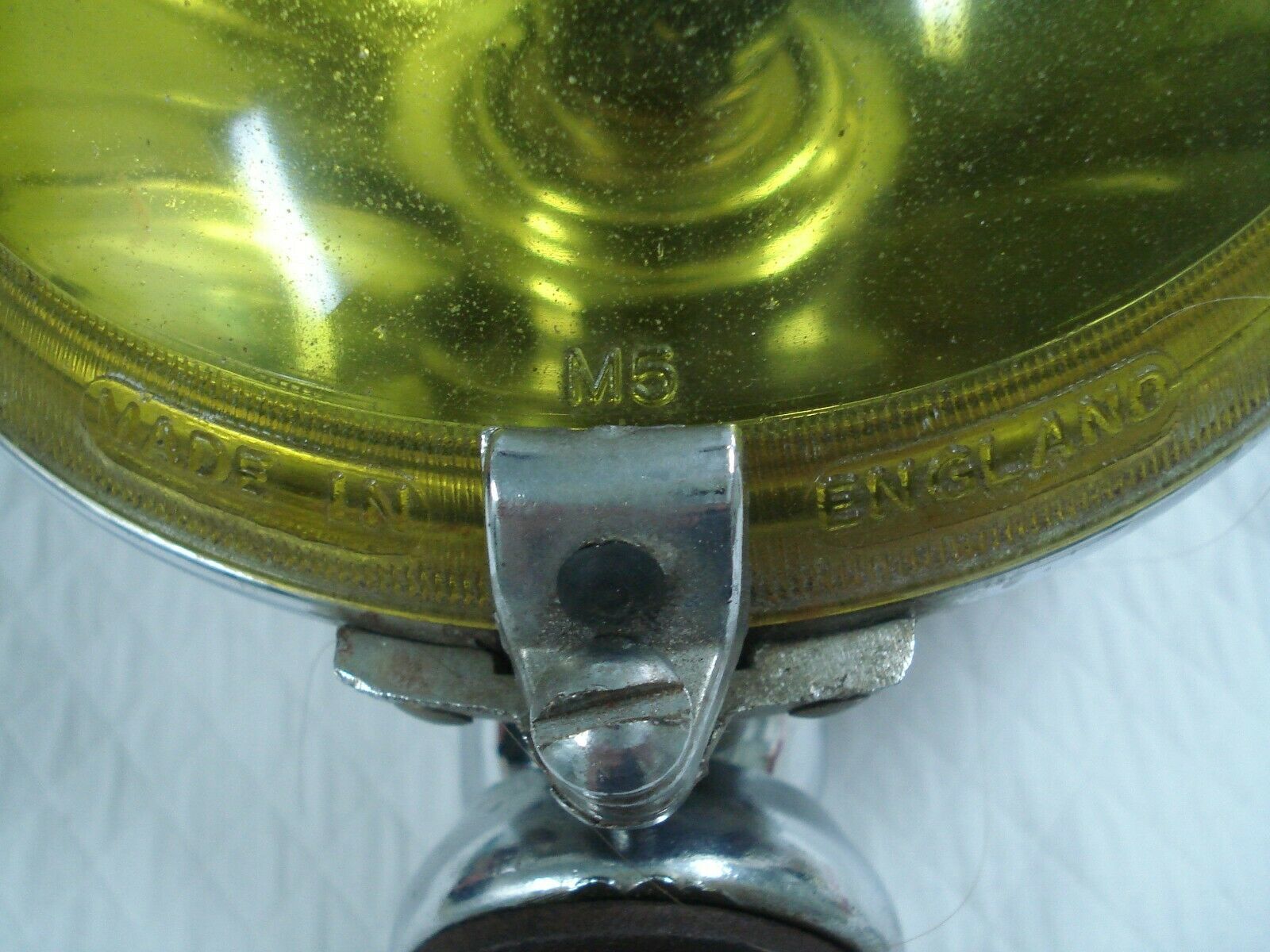
Markings at bottom of lens: "Made in England" and "M5"
|
Socket:
The socket locks the bulb into place at the back of the lens, provides electric connections to the bulb, and its rubber stand offs push against the back of the housing to keep the lens from rattling against the housing and keep the electrical connections firmly against the bulb. There are two versions. The early version is black Bakelite (Lucas 554667) and a later brown phenolic version (Lucas 54520352).
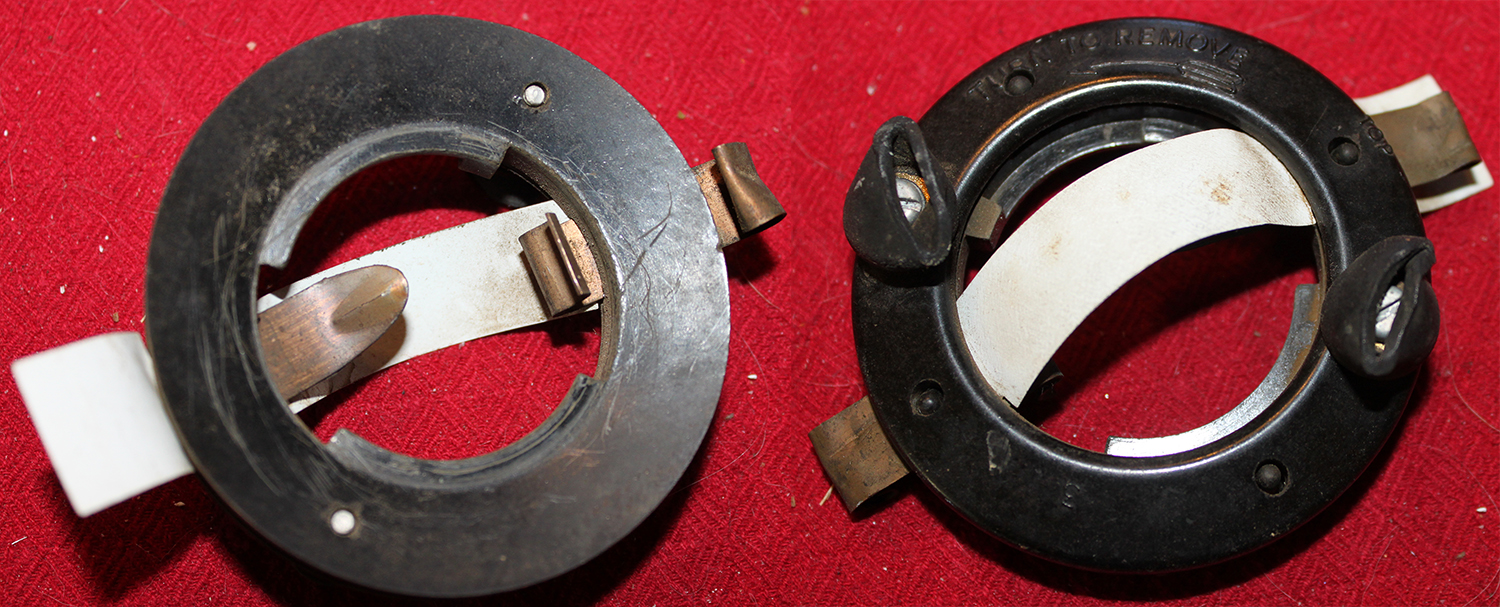
Early black Bakelite socket
(Lucas 554667)
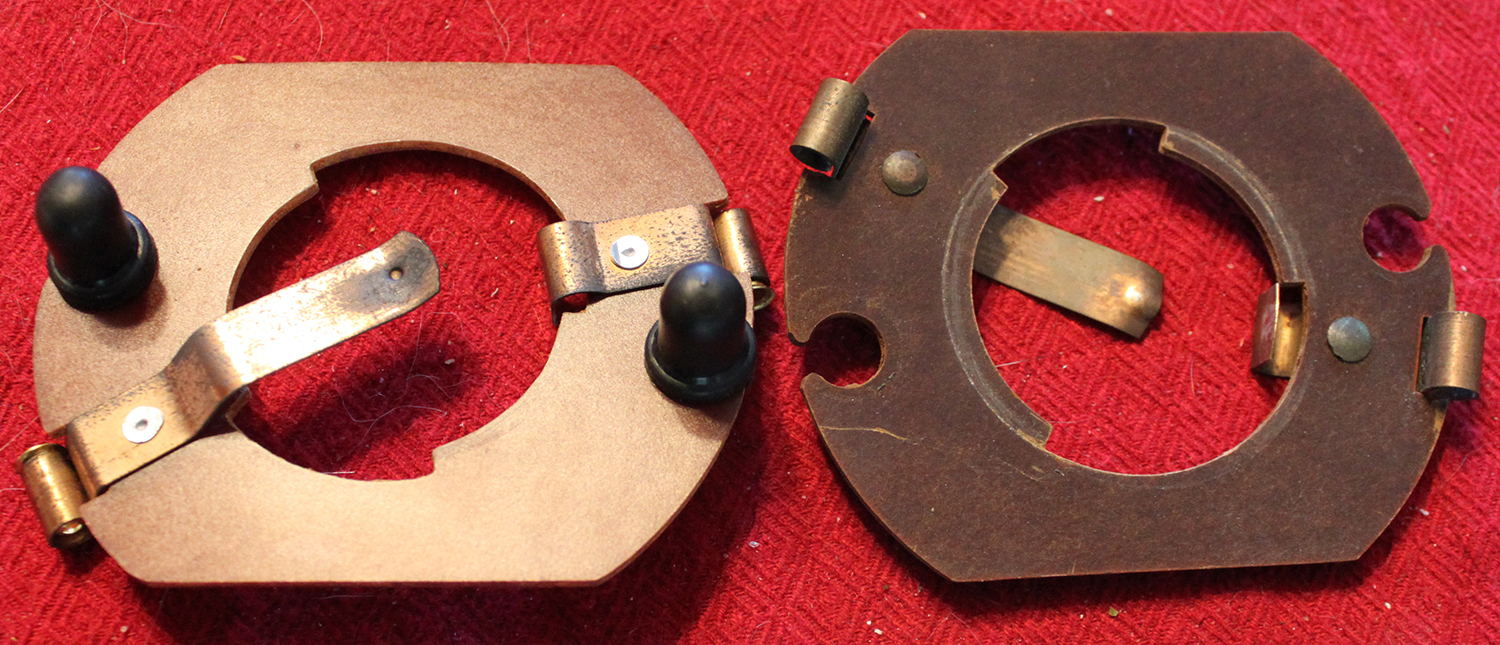
Later phenolic socket
(Lucas 54520352)
Wire insulation colours per Lucas standard wiring code:
Brown/yellow = Driving lamp to switch
Red/yellow = Fog lamp to switch
Red/blue = Switched 12V through fuse to switch
Bulb:
The original bulbs are special pre-focus Lucas bulbs. There is a notch in the BPF base flange to correctly line the filament up with the front reflector to properly direct light back to the rear reflector. Lucas LLB185, 12V, 48 watts, axial filament for driving lights and Lucas 323 12V, 48 watt, transverse filament (filament pointed to base) bulb for fog lamps. These bulbs were used in both the 576 and 700 series of lights.
I have found 2 versions of markings on the original style LLB185 bulb. One version just has 12V 48 W stamped into the side of the base above the flange. The other is marked in white at the top of the bulb glass. There is a circle with "B" above "TH" in the circle. Outside the circle is "made in England" and "12V 48W". This appears to be the earlier version of the two.
Halogen bulbs are now offered for this use, as are brighter lower power LED bulbs. Some of the higher power halogen bulbs have been known to produce enough heat to crack the lens. The LEDs have cells pointed to the front and sides that while brighter and lower power, produces a wider less, focused light.
|
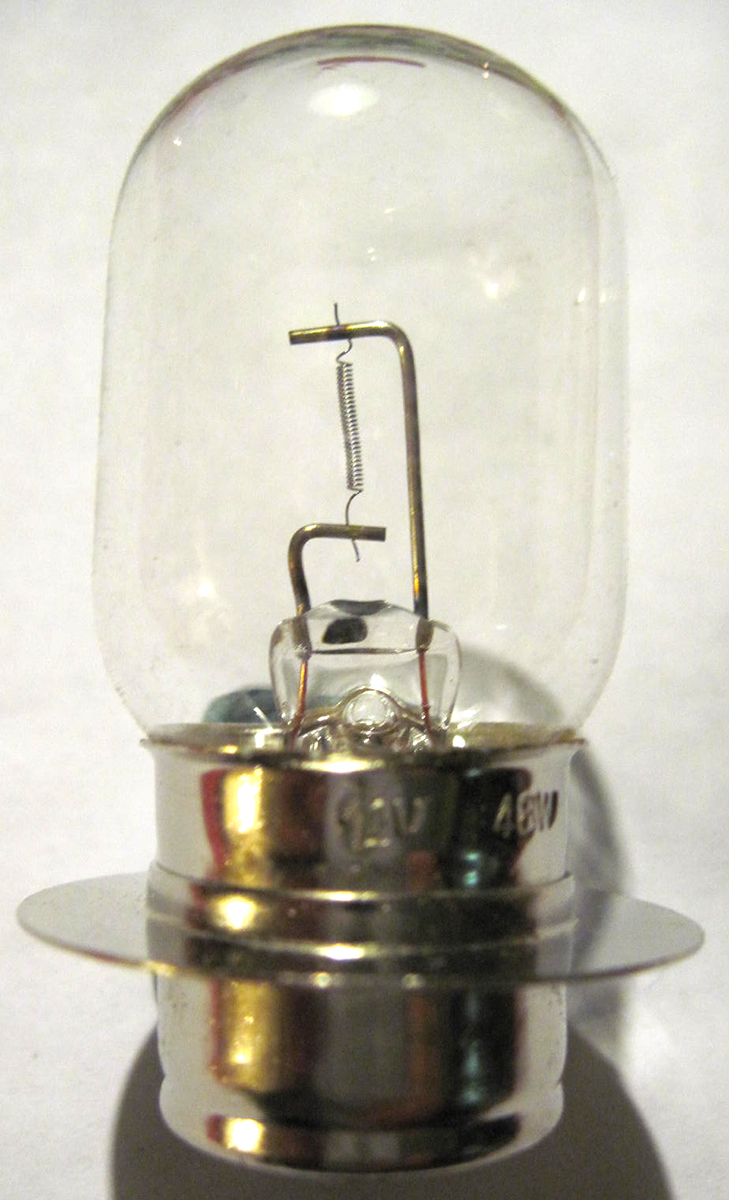
LUCAS LLB185
12V 48W
for driving light
|
Instillation Instructions:
Lucas standard wiring colours are red / yellow between the switch and the fog lamps, and red / blue between the fuse and the fog lamp switch. The power for the lamps should come off the switched 12V fuse. The PDF instruction sheet is courtesy of Don Hiscock. Lucas 576 series lamp instillation instructions
Switch and Panel:
Most British cars did not come with auxiliary lighting as standard, so when added the switches were usually placed on an auxiliary panel screwed to the underside of the instrument panel. The most commonly used panel was the Lucas PS-7 which had two holes. When a single switch was used, the other hole had an indicator light. When two different auxiliary lamps were used, the panel held two switches. The knob for a fog lamp was either labeled "F" or "FOG". The knob for the long range driving lamp was labeled "LR". The common Lucas push - pull switch was used (Lucas 31434). Of course you are free to mount the switches wherever works best for you. The 1950s factory rally TRs mounted them to the instrument panel, horizontally below the overdrive switch. The Lucas PS-7 switch panel is only 2-1/2" long at the top, 1-3/4" long at the bottom, and 1-1/2 inch high so it is very compact.
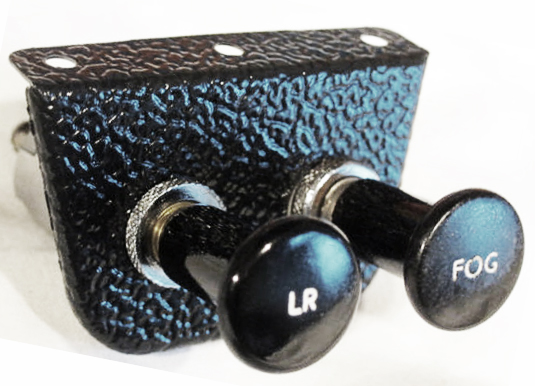
Lucas PS-7 switch panel with 2 Lucas 31434 switches
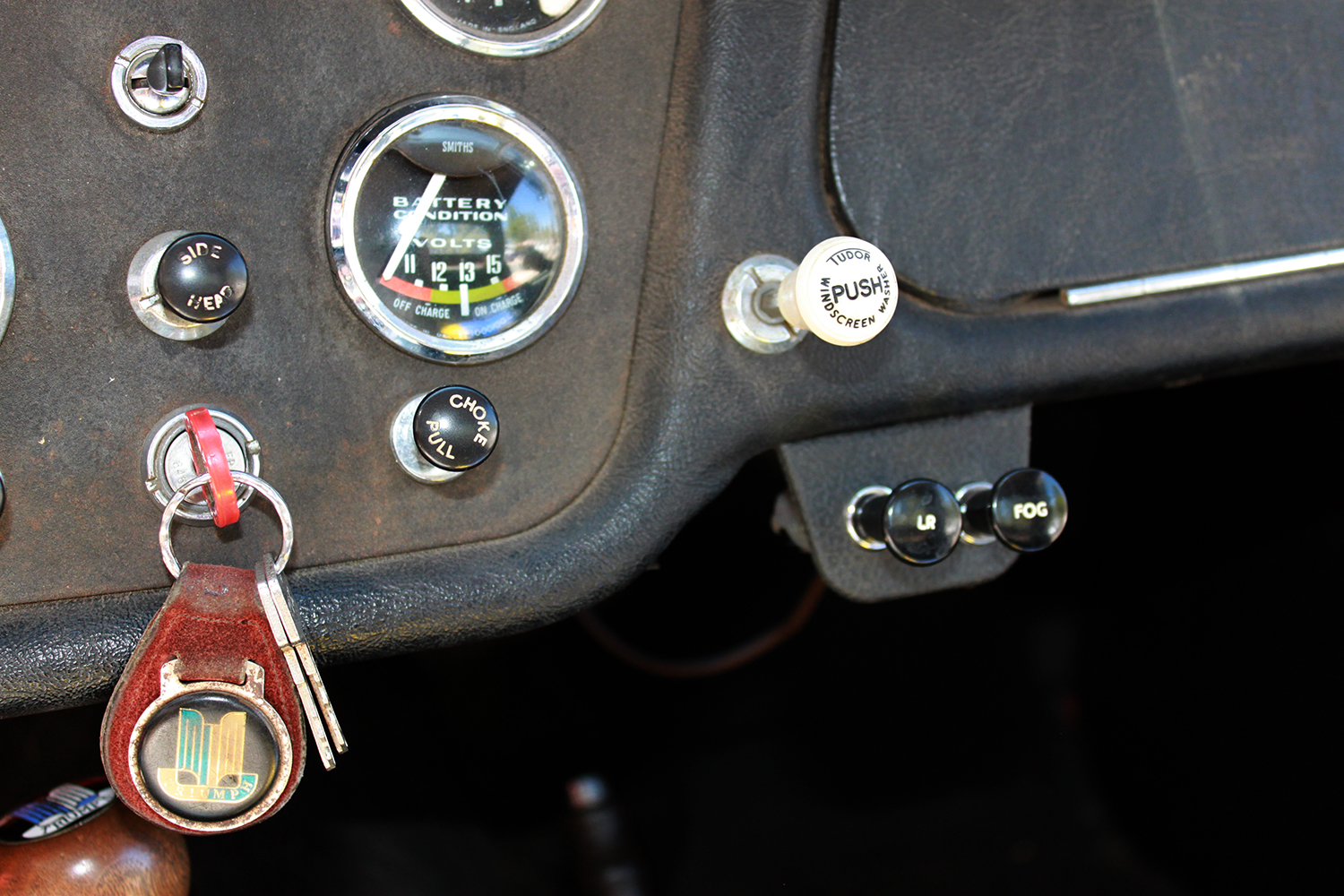
The Lucas PS-7 switch panel mounted in my TR3 passenger side. The paint texture is a perfect match.
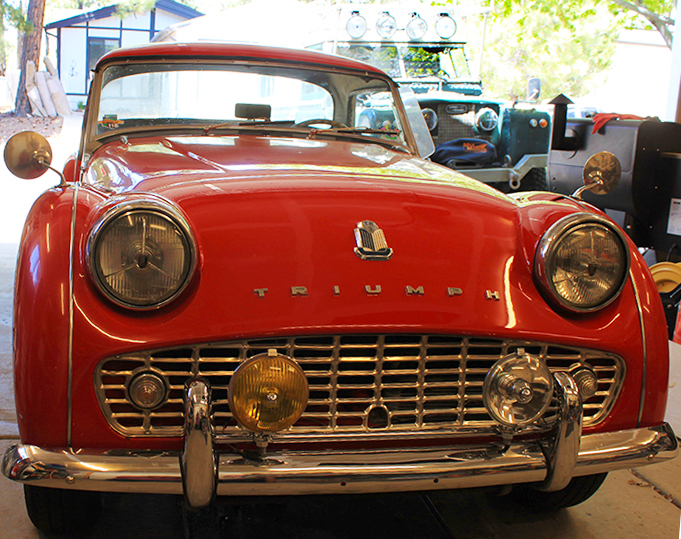
When having both a driving lamp and a fog lamp the driving lamp always goes on the drivers side.
In this installation I used a stainless steel straps with holes spaced 3-1/2" center to center to lower the mounting bar.
New lamps and replacement parts:
Moss motors offers new 576 series aftermarket lamps and replacement parts to allow you to repair your lamps. For some reason they tucked the page away in the section for MGA electrical parts, so most people have no idea that Moss offers lamps and lamp parts. They offer complete lamps with the longer Jaguar attachment studs.
Rimmer Brothers offers badge/ auxiliary bars for the TR3A: https://rimmerbros.com/Item--i-552399X
And for the TR2 and TR3: https://rimmerbros.com/Item--i-552399
Return to the page top
|

![]() TRIUMPH
Contents page >Lucas round Axillary lights
TRIUMPH
Contents page >Lucas round Axillary lights 















